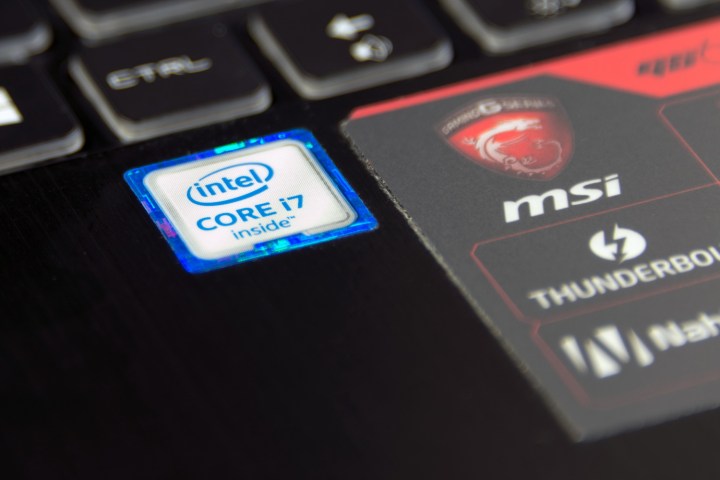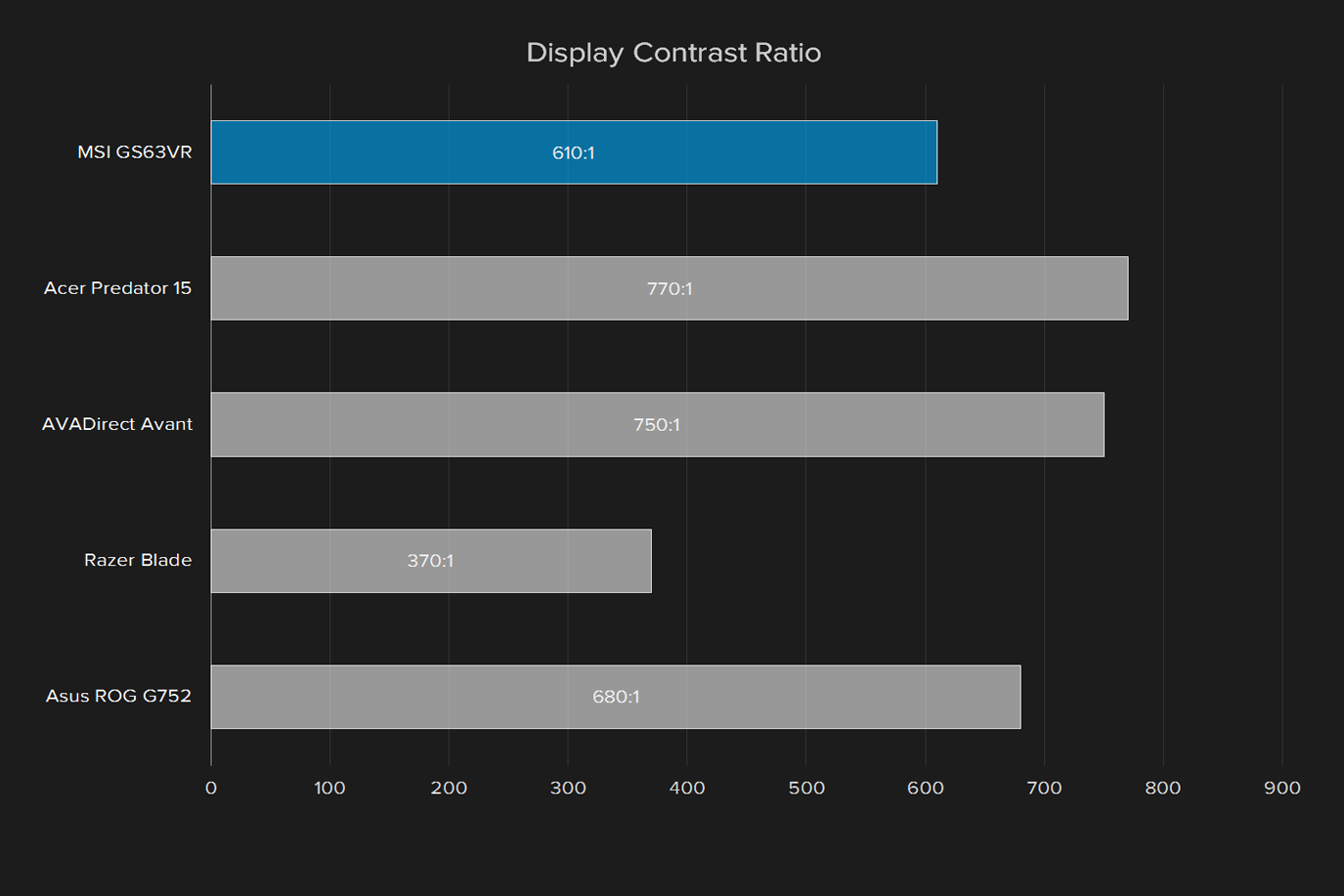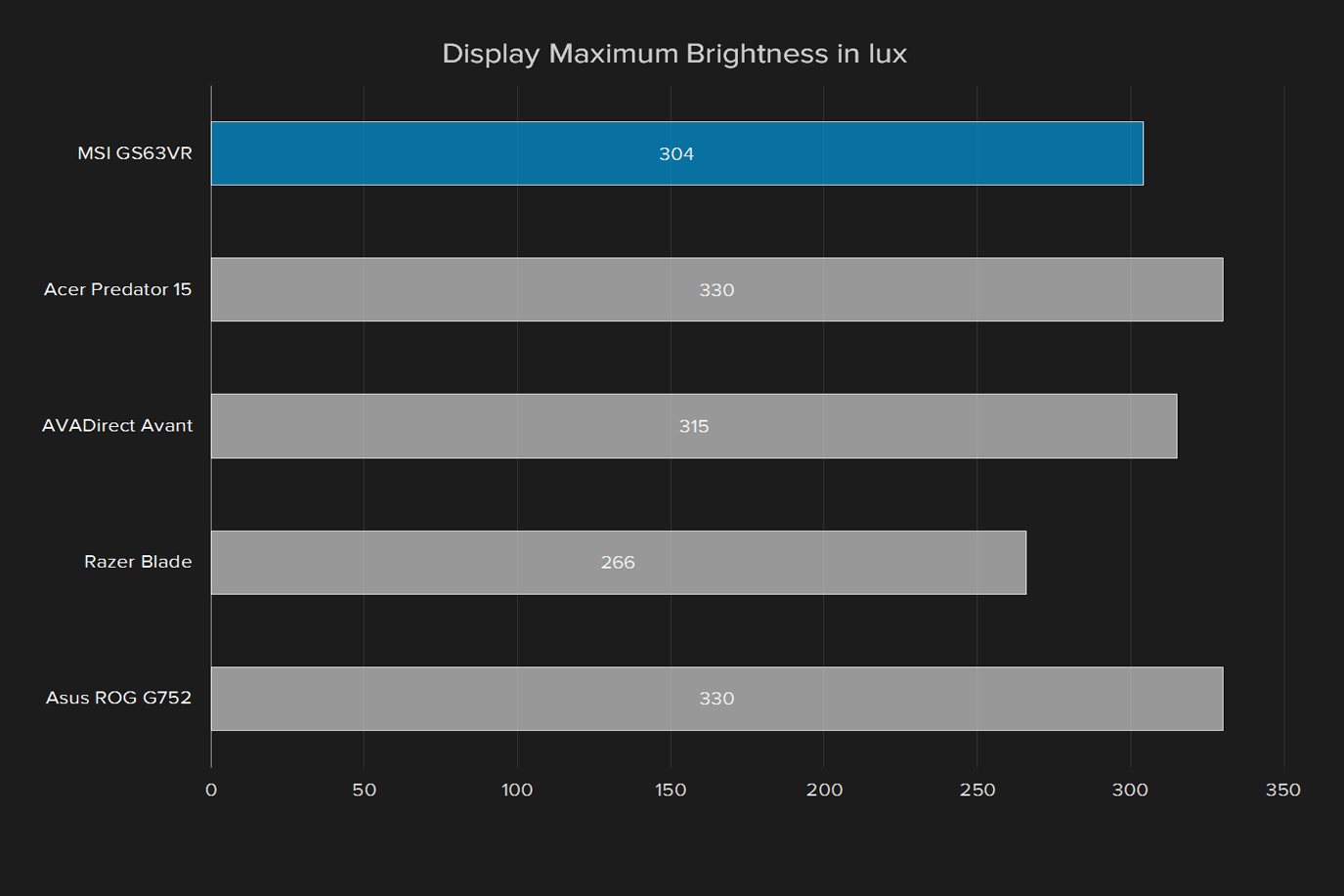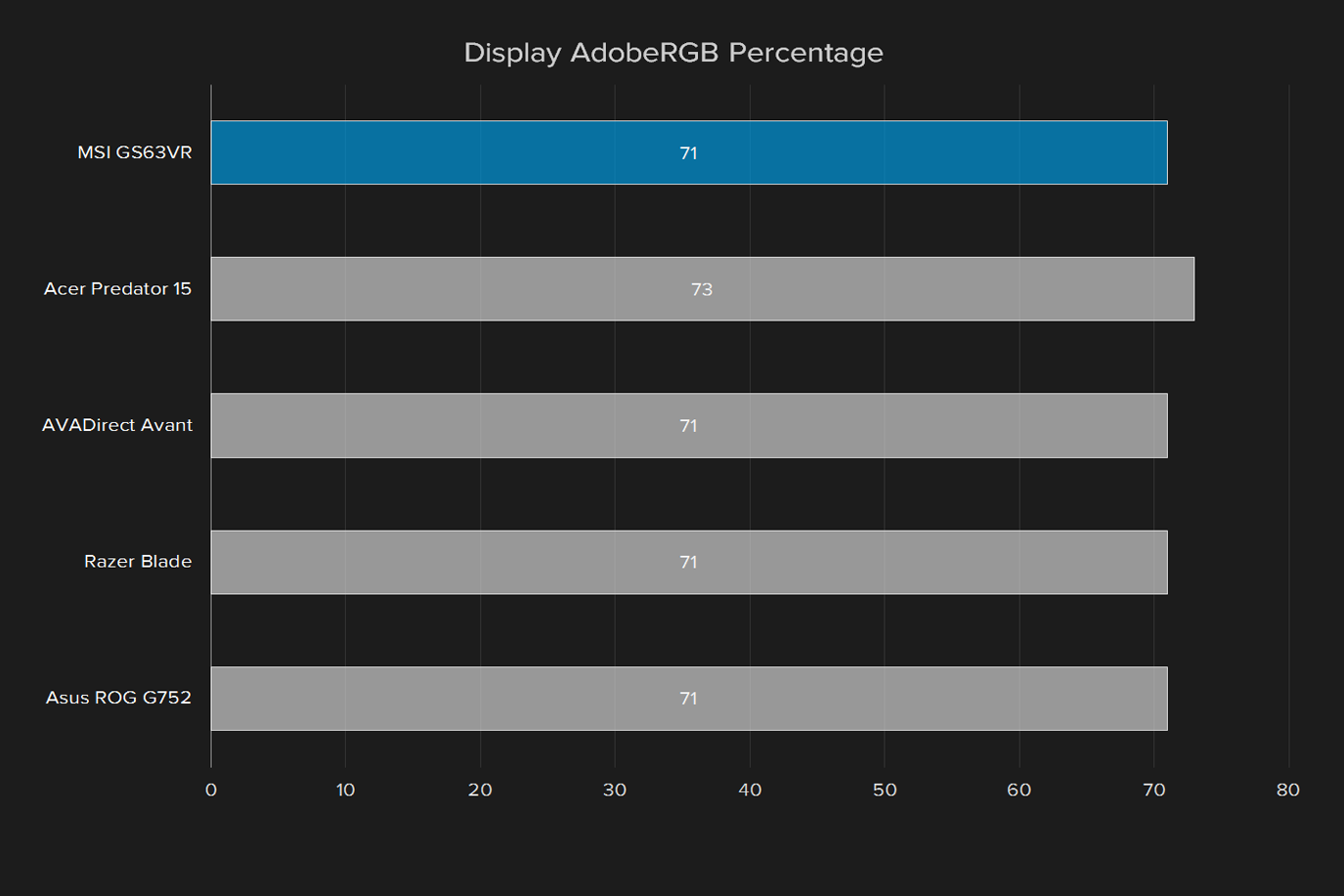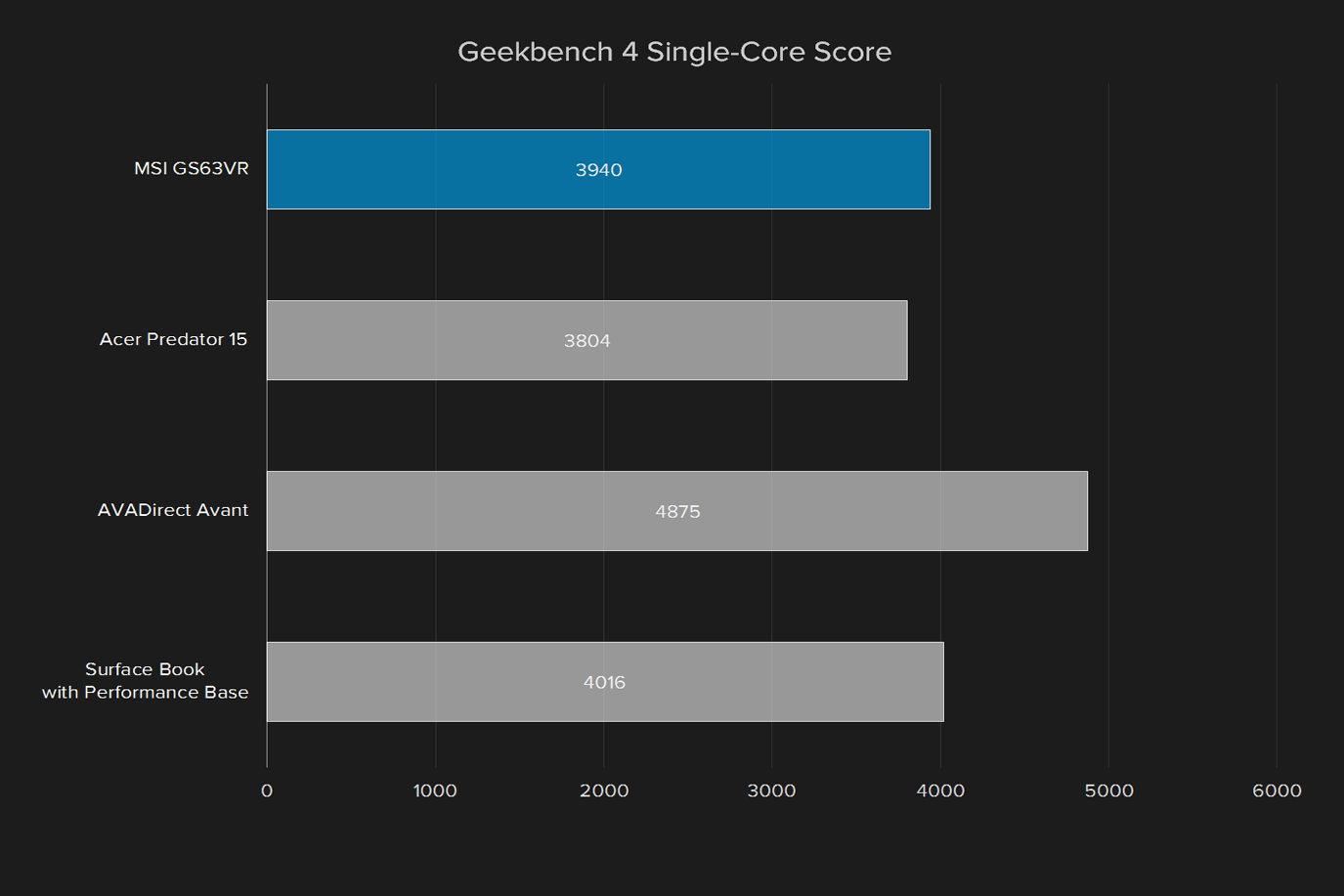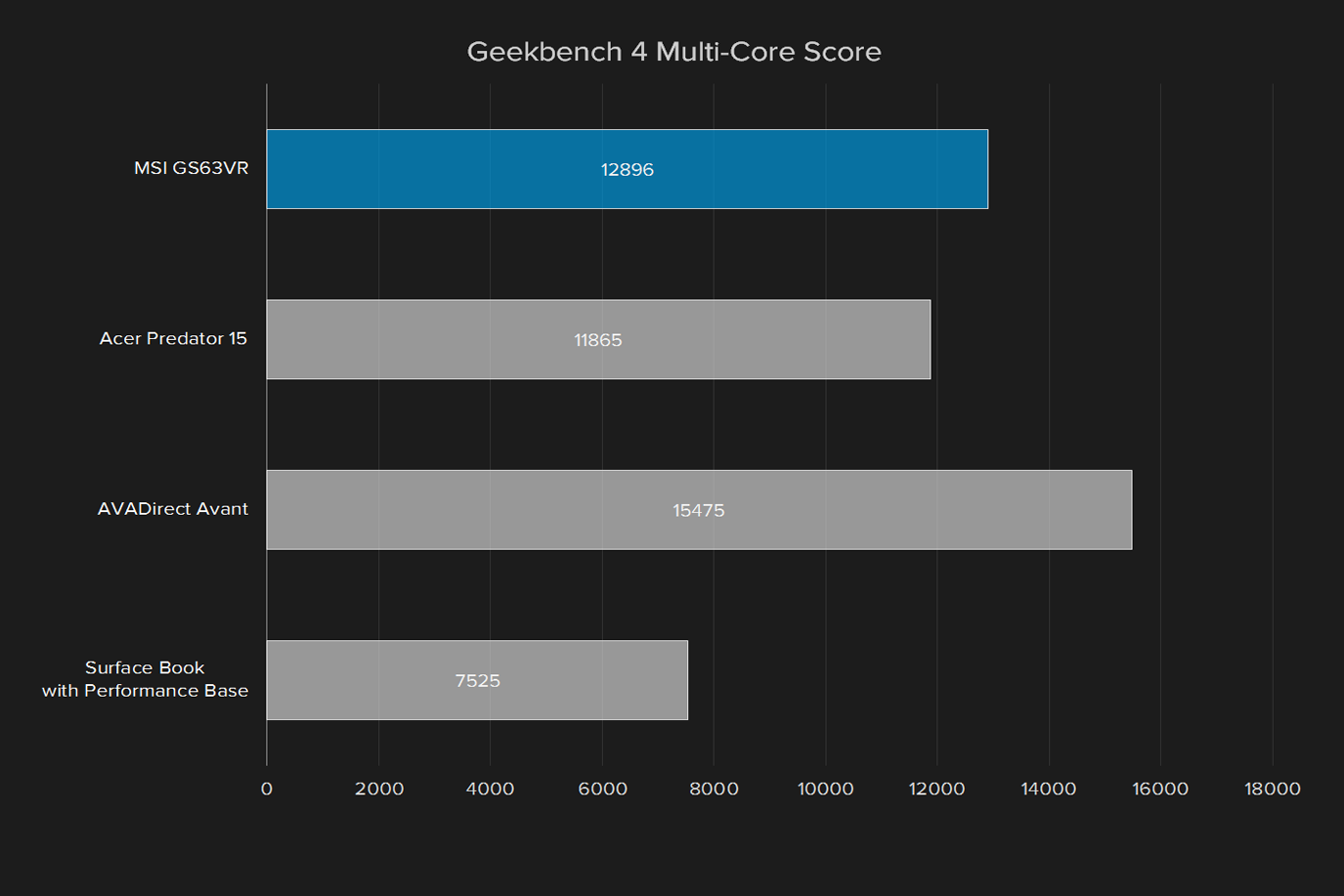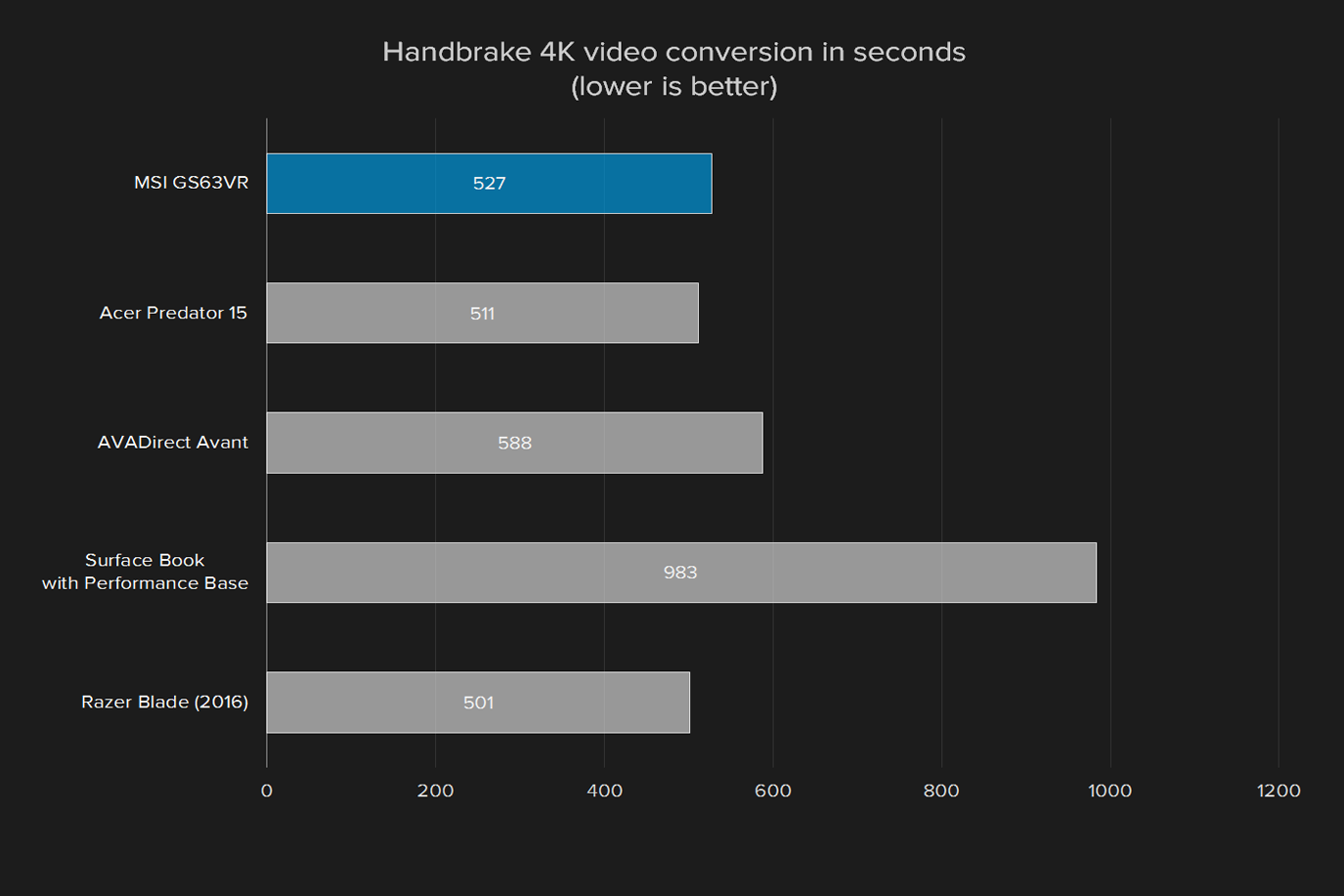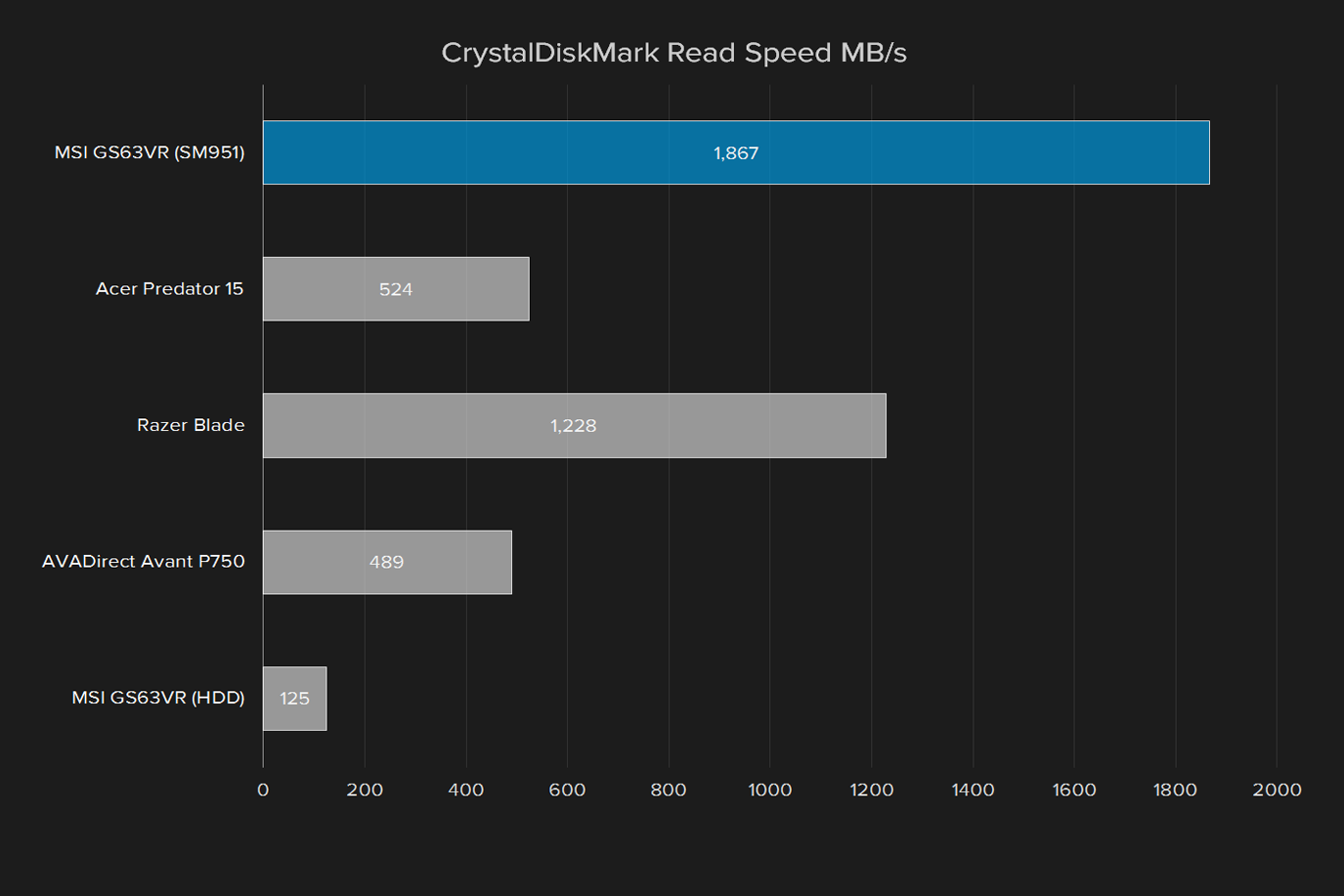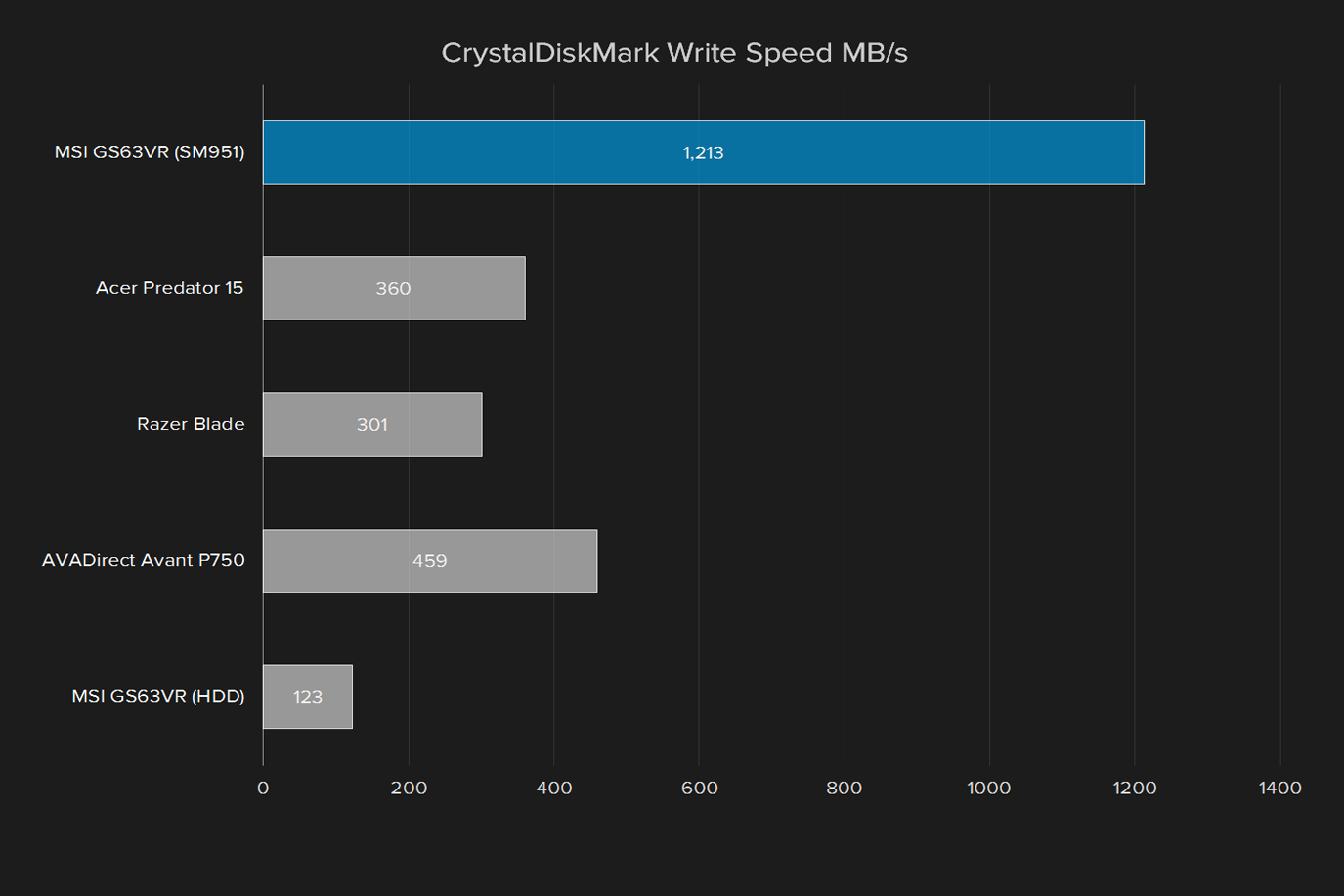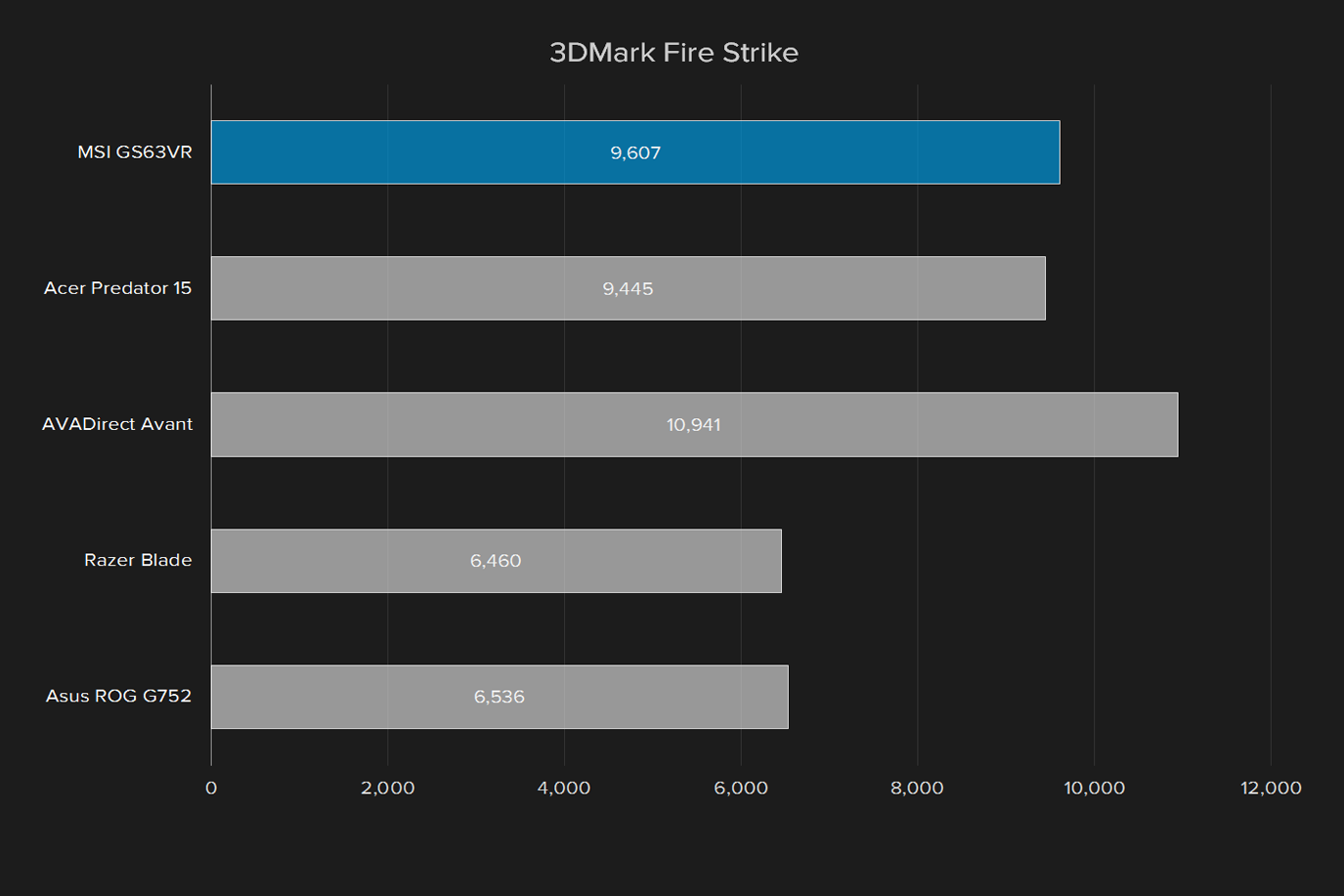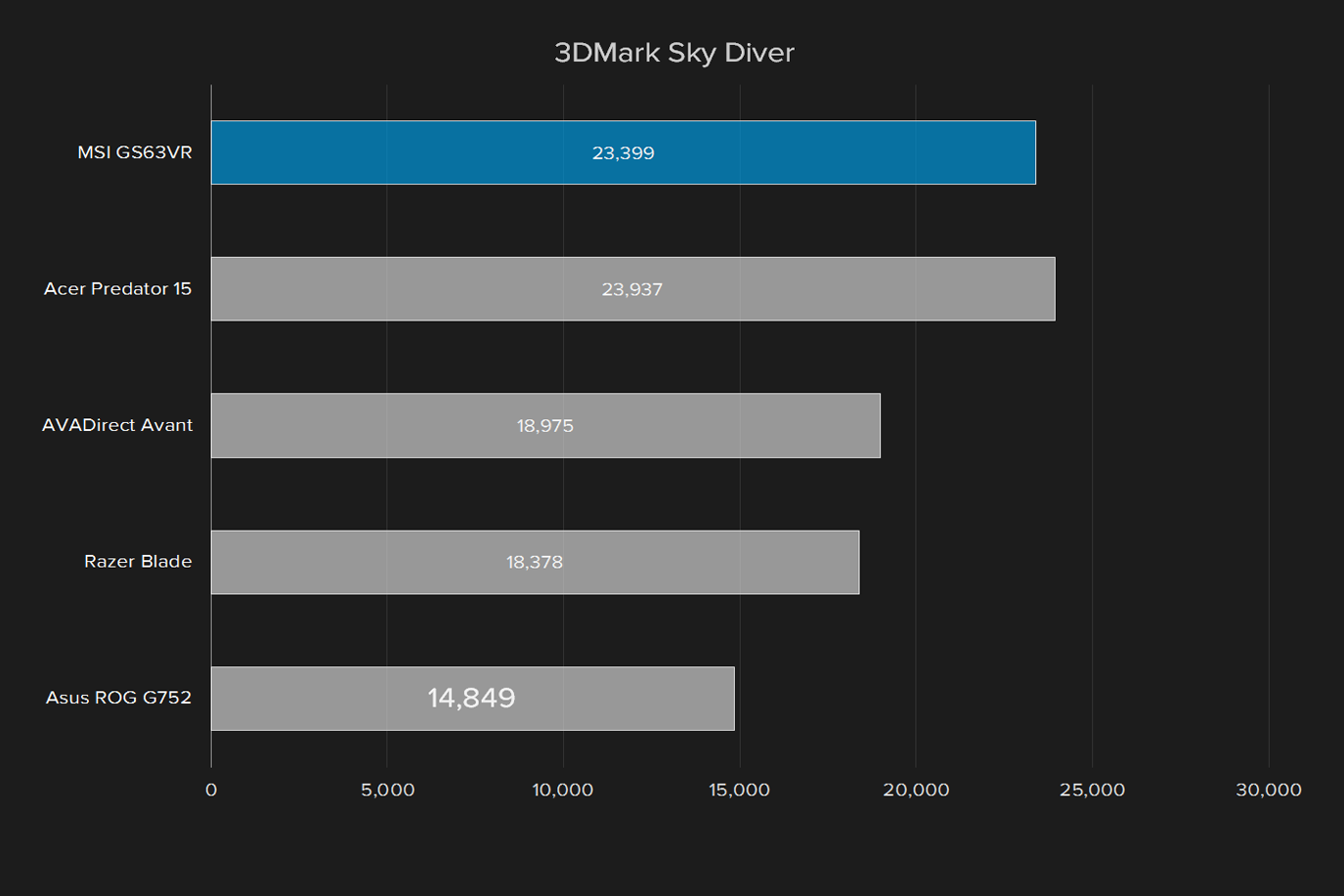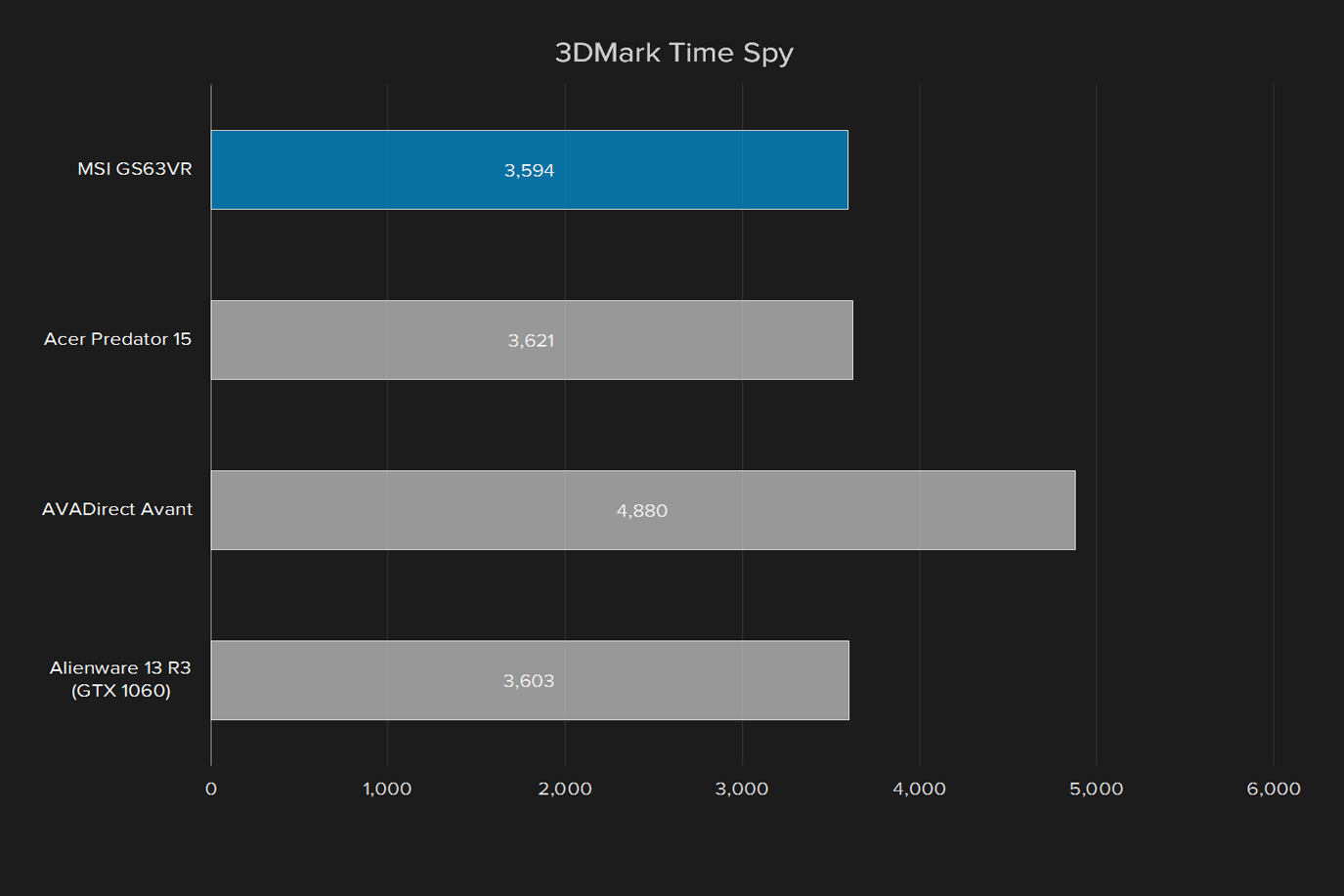- Solid CPU performance
- Handles games beautifully at 1080p
- Plenty of connectivity
- Display offers solid contrast ratio
- Packed with bloatware
- Display’s gamma is inaccurate
You’ve likely come across MSI’s GS60 if you’ve shopped for gaming laptops in the last ten years. Despite minor changes each year, the look remains the same — a thin, black chassis with a colorful Steelseries keyboard and whatever Nvidia discrete graphics option is trendy.
But this time felt a little different. Intel’s mobile CPU offerings are more power efficient than ever, and Nvidia’s mobile line performs very similarly to the desktop chips. That could mean a bigger leap forward than normal for this year’s edition, which is just under seven tenths of an inch thick.
To that end, MSI has picked the Intel Core i7-6700HQ, paired up with 16GB of RAM and a GTX 1060 for gaming. For storage, you’ll find a 256GB SSD and a 1TB HDD, and a 1080p screen, with a $1,700 MSRP that often falls closer to $1,550. Is this the year the GS60 finally rises from evergreen option to true competitor?
A fuzzy bottom
MSI’s GS63VR might look familiar. If it does, it’s because MSI builds these enclosures in-house, and then licenses them out to other manufacturers for rebranding. It’s a bland affair, but the bright side is a lower chassis that feels sturdy and svelte, whether tucked under your arm or out in a meeting. Turn off the RGB keys, and no one would guess you’re using a gaming laptop.
The screen is a different story. It’s slightly flimsy, bending and curving a bit when you open or close the lid. MSI’s logo at the center of the screen on the bottom bezel is even worse, flexing dramatically at the slightest touch. It’s not an uncommon problem for smaller systems, although most higher-end models avoid it.
Strangely, the MSI has a fuzzy bottom – no joke! The underside is coated in a thin fabric. This is a design choice we’re not clear on. Theoretically, this helps keep any heat from radiating as badly into the user’s lap. It never seemed to get too hot around the bottom, so if that was the goal, it works as intended. It also keeps an otherwise slick laptop from sliding around on a desktop much, although most systems accomplish the same without getting warm-and-fuzzy.
Rich set of plugs
What the MSI lacks in looks, it makes up for with a healthy number of wired connections. Up the left side, you’ll find 3.5mm audio in and out, a full-sized SD card slot, Ethernet, and three USB 3.0 ports. Around the right side, there’s a full-sized HDMI port, Mini DisplayPort, Thunderbolt 3, and an extra USB 2.0 for good measure.
That’s a lot of connection options for such a slim machine, even among other gaming systems. Full-sized video outputs are always appreciated, particularly the inclusion of HDMI 2.0, for 60Hz 4K. That’s an option the best gaming monitors are frequently supporting.
A familiar keyboard
Like the system’s design, the MSI’s SteelSeries keyboard is one we’re very familiar with. It packs in a numpad, an increasingly uncommon feature on 15-inch laptops. It’s a bit narrow, a problem that expands to the whole keyboard. Thankfully, important buttons like “backspace” and both shifts are full-width, a blessing for gamers.
Though bland, the chassis feels sturdy and svelte.
Gaming laptops are typically fitted with comfortable, responsive keyboards, and what the MSI lacks in spaciousness, it makes up for with chunky switches that have a clear activation point and solid movement. They’re bolstered by full, bright back-lighting in RGB zones, allowing you to customize the look to your liking.
The touchpad isn’t as exciting. The integrated buttons are a bit mushy, and there isn’t a clear indicator between the left and right click areas. It’s spacious, but not as wide or tall as some of the massive touchpads we’ve grown used to seeing in more expensive laptops.
Deep contrast, hurt by gamma
The MSI’s 15-inch, 1080p panel is the baseline resolution for gaming systems these days. More and more, high-end systems have reached for 1440p or 4K panels — unfortunately, mobile gaming hardware can’t always keep up with the latest games at native resolution. We have no problem with the MSI chosen here, and feel it’s a good match with the GTX 1060 graphics chip.
While the GS63VR’s display isn’t impressive, it scores well enough across the board. Its maximum brightness and contrast are both right at acceptable levels, without really excelling in either category, particularly when faced off against recent OLED panels that have made their way into systems like the Alienware 13. Color gamut is average, so nothing to complain about there. The gamma is too low, resulting in slightly washed-out images, and color accuracy is off, but that’s not likely to matter too much.
The result is a panel that fits all the needs of the gamer on the go. Contrast is one of the most important aspects when it comes to gaming, allowing for deep, dark blacks and brighter explosions and light sources. In that sense, the MSI’s display performs well, but you’ll typically have to tweak the in-game gamma to get the most out of it. Once you do, you’ll find a pleasantly deep image, even if it doesn’t keep up with newer OLED panels in terms of black levels.
Movies are less appealing, simply because there isn’t always an easy way to adjust the gamma back to standard levels. As such, you may find that darker scenes in media look overexposed, and washed out. On the bright side, VLC allows easy adjustment for video files, making off-kilter gamma an easily solvable problem.
Louder isn’t always better
If there’s one thing the MSI’s speakers do well, it’s volume. They are loud. Yet turning the volume up all the way, even while playing music, is ill-advised, as the tone becomes a serious issue. Even at half volume, the GS63VR’s speakers crack and sputter, and bass is non-existent. Granted, most gaming laptop users are going to bring a pair of headphones, and audio quality is a sore spot for slimmer laptops. But the MSI performs worse than most.
We’ve seen this chip before
Our review unit was equipped with an Intel Core i7-6700HQ, the most common quad-core chip for laptops. It’s a familiar chip to us, as we’ve tested it in multiple systems over the last year. We didn’t expect any surprises.
Apart from the AVADirect Avant’s desktop-grade CPU claiming several victories, the MSI’s Core i7-6700HQ is one of the stronger options we’ve seen in a gaming laptop so far. It claims victories over both the Acer Predator 15, and Surface Book with Performance Base.
We have more systems to compare in our older Handbrake 4K video conversion test, and the MSI keeps up there too. It even beats out the desktop-grade AVADirect Avant’s CPU, at least in some of our test situations.
Of course, CPU isn’t the only thing that matters when it comes to gaming. Everything from the solid state drive to the graphics chip can make a huge difference in framerate and gaming quality.
Life in the fast lane
Our review unit came packed with two hard drives. The boot drive was a 256GB Samsung SM951 — a common PCIe SSD — with a 1TB data drive for some extra games or media.
The NVMe SSD in the MSI screamed past the competition in terms of read speed. Not surprising, considering the only other comparable system we’ve tested with a PCIe SSD is the Razer Blade. Even in terms of write speed, where mid-tier NVMe drives tend to fall behind, the GS63VR’s offering holds a strong lead. It might not feel a lot faster than a SATA SSD moment to moment, but it makes a big difference in both longevity and SSD-intensive tasks.
GPU test track
This time around, the GS63VR is powered by an Nvidia GeForce GTX 1060 GPU, the equivalent of last generation’s GTX 970M. It’s a powerful mobile chip, and one that should be more than capable of handling modern games at the system’s native 1080p resolution.
The GS63VR trades blows with its closest competitor, the Acer Predator 15, in the synthetic 3DMark graphical tests. Both systems are remarkably similar, so it’s no real surprise that the difference between the two is never more than three percent. The AVADirect Avant’s GTX 1070 steals a win over both laptops, partially thanks to its full-power desktop Core i5, but mostly it’s the higher-end GPU that deserves credit.
On the open road
We’ve tested the GTX 1060 in several situations, and out on the open road, it handles 1080p gaming without breaking a sweat, and can even stay competitive when the resolution goes up.
The MSI’s 75 frame per second average in Battlefield 1, with the settings cranked up, is a strong start, and the score is exactly where we’d like to see it. It should be more than capable of holding the 60FPS ideal spot.
While the average framerate in Deus Ex: Mankind Divided might not look so sharp, it’s a very demanding game, and the MSI’s score is reasonably average. With a little tuning in the settings, you should have no issue pushing the game to 60 FPS or higher, which is all you can really ask from a slim gaming laptop.
All in all, the MSI’s performance in-game isn’t going to set any records. But it’s more than enough for gamers looking to take their evening of Overwatch into the living room, and it should be able to keep up at 1080p for at least a few years.
Thin without sacrificing battery life
There are two aspects to portability — size and battery life. In the former, the MSI excels, with a slim footprint and an efficient use of space that allows for a full-sized numpad and trackpad. At just under .7 inches thick, the GS63VR has a waistline.02 mm thinner than the Razer Blade. It feels great.
Typically, a slim chassis means less room for batteries, and you trade backpack space for longevity. The MSI packs in a surprisingly mid-range 54Wh battery. Yet it manages to hit almost five hours in our video loop, which is good news for travelers and movie lovers.
The MSI also manages to power through just over three hours of the Peacekeeper browser benchmark before collapsing from exhaustion, a score that either ties its competitors, or beats them by up to an hour. It doesn’t quite keep up with non-gaming systems, but among laptops with discrete graphics, it holds its own well.
So very bloated
While other high-end system manufacturers have worked hard to cut back on unnecessary bundled software, MSI has embraced the bloatware life with a swath of intrusive software of dubious utility. In fact, there was so much extra software on our review unit that the first thing we did was run a fresh installation of Windows 10, as we were having compatibility issues with our benchmarking software.
It’s not a rare problem for gaming laptops, which often pack in extra software and optimization utilities. To have them be so bad that you need to reinstall the OS is another issue entirely. The upshot is that it’s an easy fix that doesn’t take very long. If the idea of installing your own OS is a completely foreign one, it’s worth noting you might struggle with the MSI right out of the box.
Warranty
MSI provides a one year warranty on all of its laptops. That’s fairly standard for laptops of any category, and right in line with the MSI’s competitors. As an added bonus, MSI also covers damage because of “drops, spills, electrical surges, or fire” and will repair or replace the system once within the first year. All you have to cover is shipping back to MSI.
Our Take
MSI’s GS63VR packs familiar components into a plain chassis, but that doesn’t mean it’s boring or useless. In fact, MSI manages to provide competitive gaming performance, paired up with a decent 1080p panel, in one of the slimmest designs we’ve yet to see from a gaming notebook.
Is there a better alternative?
While the gaming laptop world grows more crowded every day, the MSI GS63VR is now one of the slimmest on the market. If you don’t plan on using a gaming laptop as your daily driver, the AVADirect Avant or the Asus ROG G752 bulk up a bit, but offer better performance options.
If backpack space is at a minimum, or you need to fly under the radar with your gaming, the Razer Blade is an option. Origin also offers almost the exact same chassis with its EVO-15, but expect to pay a couple hundred dollars more for it. Paying more for the Origin does net you better customer support, and provides additional customization options.
How long will it last?
With the latest generation Nvidia graphics and a PCIe SSD, now is a good time to pick up the MSI GS63VR in terms of longevity. The only knock against it is the 6th-generation Intel hardware, but MSI announced at CES 2017 that the GS63VR will move to the 7th-gen soon– so wait if that concerns you. The 1080p screen is limiting in some ways, but also ensures you have enough overhead to keep playing the latest games at native resolution for a few years.
Should you buy it?
Yes. This MSI doesn’t turn heads like an Alienware, but it’s perfect for weekend warriors looking to keep a low profile, while still churning out smooth performance in modern games. Plus, it’s well-priced, with a $1,700 MSRP that often falls under $1,600 fully tricked out, without making any major compromises, apart from needing to uninstall a bunch of bloatware. Previous models of the GS60 didn’t impress us, but this new version is a huge step in the right direction.




